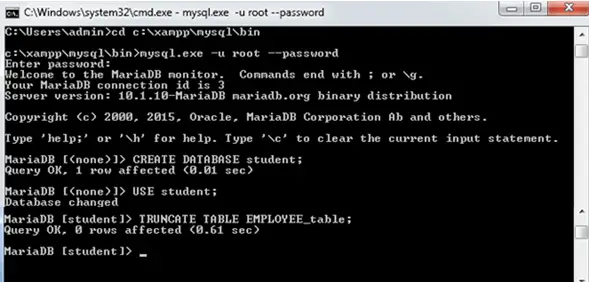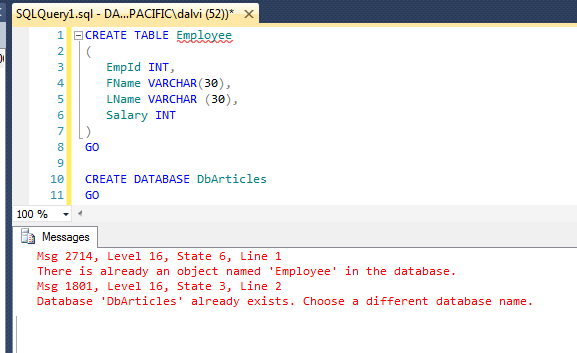


> File "/usr/local/lib/python2.7/dist-packages/sqlalchemy/orm/_init_.py", line 1129, in mapper When I run 'alembic revision -autogenerate' to create migration script, and got below error: > You can see that Test2 is a table without a primary key. > fid = Column(Integer, ForeignKey(' test1.id')) > id = Column(Integer, primary_key = True) > I have 2 simple tables defined as below: On Dec 1, 2012, at 11:49 AM, junepeach wrote: Non-primary key is not good design, but acceptable in mysql, sqlite, postgresql.
#Alembic sqlite drop column error how to#
So I wonder how to create a migration script for a table without primary key. : Mapper Mapper|Test2|test2 could not assemble any primary key columns for mapped table 'test2' Return Mapper(class_, local_table, *args, **params)įile "/usr/local/lib/python2.7/dist-packages/sqlalchemy/orm/mapper.py", line 203, in _init_įile "/usr/local/lib/python2.7/dist-packages/sqlalchemy/orm/mapper.py", line 767, in _configure_pks When I run 'alembic revision -autogenerate' to create migration script, and got below error:įile "/usr/local/lib/python2.7/dist-packages/sqlalchemy/orm/_init_.py", line 1129, in mapper You can see that Test2 is a table without a primary key. manage_db.sh upgrade.Fid = Column(Integer, ForeignKey(' test1.id'))
#Alembic sqlite drop column error upgrade#
Don’t forget to provide tests for any modifications you make to the model (most likely, you will need to add them to the appropriate test/unit/data/model/mapping/test_*model_mapping.py module.Īfter that, run the upgrade script. We encourage you to use Galaxy-specific utility functions ( galaxy/model/migrations/util.py) when appropriate. You’ll need to fill out the upgrade and downgradeįunctions. Migrations/alembic/versions_tsi for tsi). Script in the appropriate version directory ( migrations/alembic/versions_gxy for gxy and Run_alembic.sh script (see sections above for usage information).

You create a new revision file by running the revision subcommand of the manage_db.sh or the Make sure you have updated the model and have added appropriate tests before creating a new In most cases, you’ll need to upgrade the database schema to the current version, which is represented by the latest revision script in the migration environment.ĭeveloping Galaxy: creating new revisions ¶ If they do not match, and the database_auto_migrate configuration option is not set, Galaxy will fail with an error message explaining how to proceed. On startup, the system checks if the version in the database matches the version in the codebase. For Galaxy to run, these versions must be the same, which, essentially, means that the version of the database matches the version expected by the codebase. Galaxy keeps track of the database schema version in two places: one is a directory we refer to as “the migration environment” (located at lib/galaxy/model/migrations/alembic), the other is the alembic_version table in the database. Executing a revision script will upgrade, or downgrade, the database schema by applying the changes specified in the script. A version is represented by a revision script (the terms version and revision may be used interchangeably). Central to this is the concept of a database version (more specifically, database schema version). The purpose of the database schema migration system is to support automated, incremental, reversible changes to Galaxy’s database schema. Debugging Galaxy: Slurm Compute Cluster.Migrating from uWSGI to Gunicorn and FastAPI.September 2017 Galaxy Release (v 17.09).September 2018 Galaxy Release (v 18.09).September 2019 Galaxy Release (v 19.09).September 2020 Galaxy Release (v 20.09).September 2021 Galaxy Release (v 21.09).


 0 kommentar(er)
0 kommentar(er)
